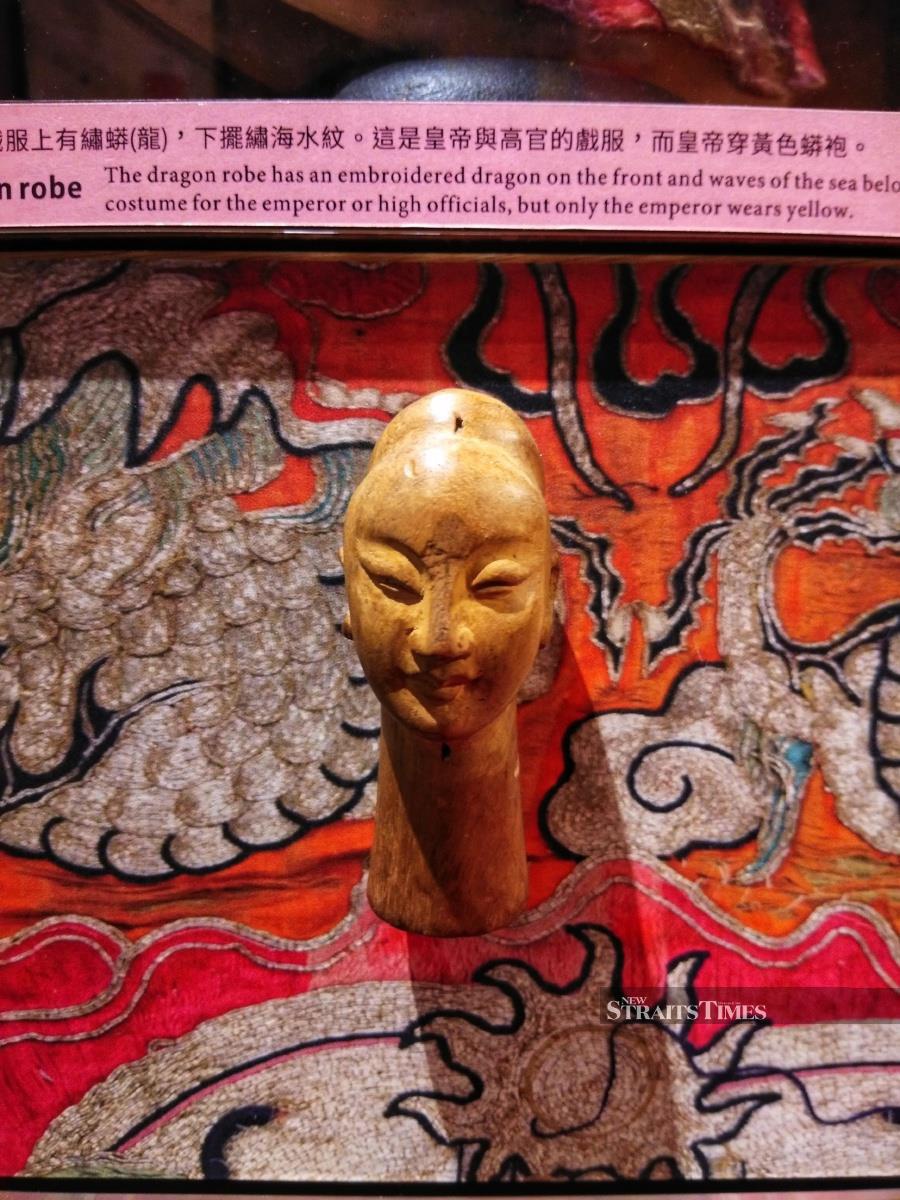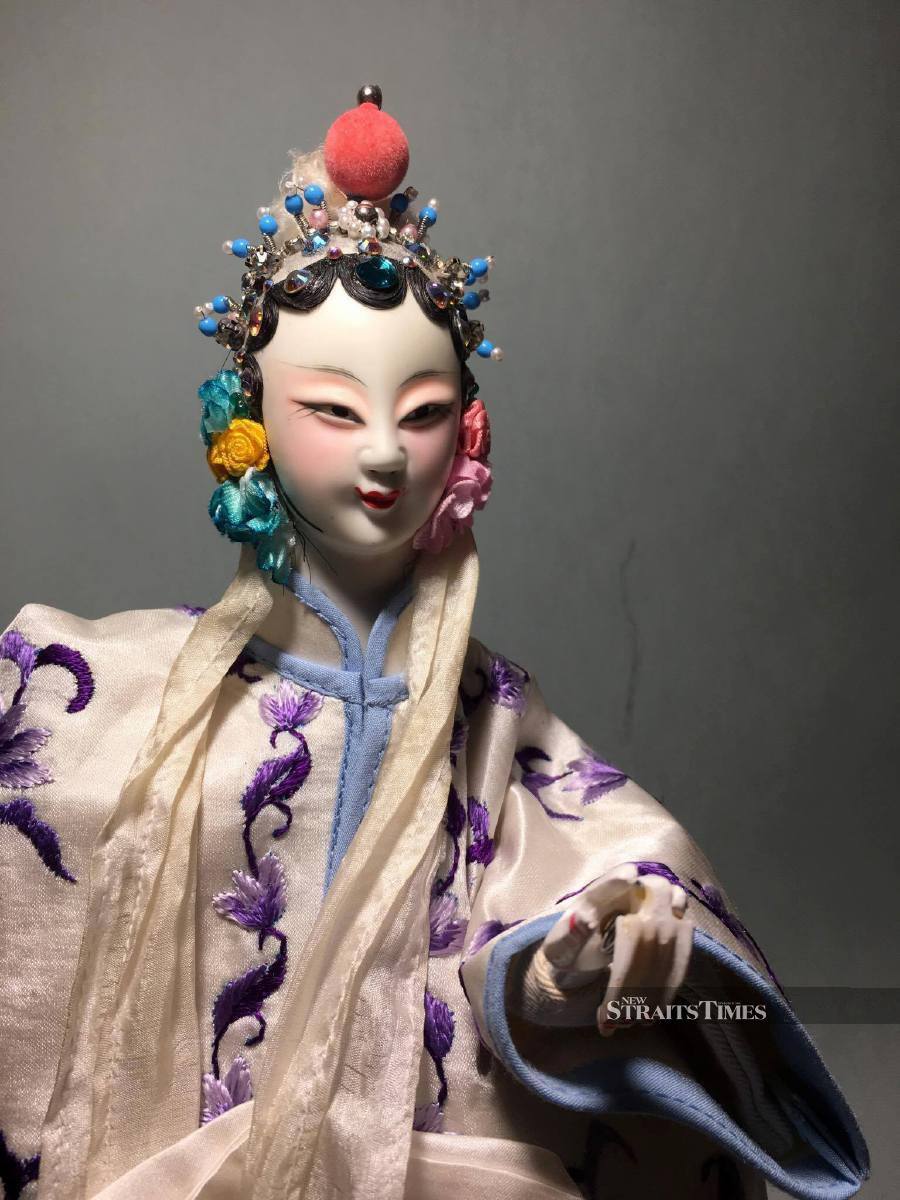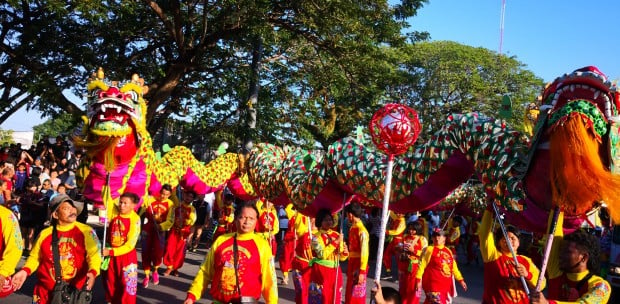THE master puppeteer tosses a puppet into the air and lets it somersault out of the stage through a cutout hole on the makeshift stage, which is about the size of a wardrobe. He then sings at the top of his voice, while another character makes an appearance. This time it is a lady complete with curtained headgear.
As a first-timer to budaixi or Taiwanese glove puppetry, I am transfixed by the scene in front of me which unfolds like magic. With every clang of the cymbals and the beat of the drums backstage, the performance draws me in, from start to finish. It takes about 30 minutes (some can stretch to 90 minutes) but the skill could make a puppet master a lifetime to master.
I have always been interested in forgotten or lesser known Chinese culture such as budaixi, but my interest has grown after my first encounter with it during a visit to Taiwan years ago. Like its Chinese opera counterpart, budaixi is usually performed as part of temple activities at certain festivals or a deity’s birthday.
I stand in front of the makeshift booth, also known as a one-man puppet theatre, on the grounds of Longshan Temple in Wanhua district in the west of Taipei City in Taiwan. In the midst of the crowded old temple located on Guangzhou Street, the puppet master is staging another show called A Family Of Three Scholars, a Chinese classic set in imperial China. It is a popular show among the Hokkien community.
But before each show, a thanksgiving ritual is a must to ensure everything goes smoothly. Prayers will be made to the deities, especially to Marshall Tian Du, to seek their blessings. Marshall Tian Du is highly regarded as the protector of Chinese opera.
When the puppet master is ready for his performance, he puts the miniature puppets, which measure about 30cm from head to toe, into his hands, just like how he would wear a glove. The puppeteer then mimics the movements of a person using his hands.

THE WORKS
The fluidity of the puppet master’s fingers as he controls the movements of the puppets amazes me. The puppets come alive as the master recites lines for each character, in soft female voices or a manly voice, depending on the characters he’s playing.
The Minnan or Hokkien dialect is usually spoken throughout the play, with a smattering of Mandarin thrown in. But, depending on the region these puppets originate from, the way they are handled can be quite different.
These include Hainanese rod puppetry from Hainan Island in the south of China and string puppetry from the southern regions like Fujian. There is also the waijiang string puppetry performed by the Hakka community in eastern China.
Backstage, a group of musicians, made up of both young and old, play according to the mood. The musicians are experts and are capable of handling each traditional instrument such as the gong, cymbal and erhu, which give the overall performance its distinctive sound.
Budaixi is very popular with both the young and old, thanks to its lingering music, brisk colour and lively performance. Don’t be surprised to see budaixi being broadcast on television the next time you visit Taiwan. It enjoys the same popularity as other Taiwanese soap operas.

PUPPET THEATRE MUSEUM
My budaixi experience becomes complete when I chance upon a museum dedicated to the art form while exploring the quiet neighbourhood of Dadaocheng in the Datong district, some 20 minutes drive from Taipei city centre.
The unassuming museum has its Chinese name - Taiyuan Asian Puppet Theatre Museum - written across the main entrance. A pair of Chinese couplets are plastered on the double-glass door. The stone facade of the pre-war shophouse, which was once home to a local merchant, looks worn out from the outside. The stone steps that lead into the interior of the museum has cracks, a sign that many visitors have already frequented the place.
The four-storey museum occupies the corner lot of Xining N. Road which intersects with the famous Dihua Street, a popular place among the locals for dried seafood produce. It is also a popular location among youngsters because of its many coffee shops.

The museum houses over 5,000 pieces of puppetry treasures on display. Covering approximately 660 square metres, it is divided into different sections.
I begin my tour from the top, on the fourth floor which has a door that opens to an outdoor garden on the rooftop. There’s nothing much to see here except a tank filled with water and bamboo blinds covering half of it from top to bottom. You can try your hands at Vietnamese Water Puppets here.
Each puppet is tied to a long bamboo pole and they’re sculpted from wood and painted over in vibrant colours. The water puppet is a representation of traditional Vietnamese theatre shows that date back centuries. To play, the puppeteer stands behind the bamboo blinds and moves the poles accordingly.
Next, I take the wooden staircase which creaks under my weight to the third floor. My imagination starts to run wild with every step but as soon as I arrive on the landing of the third floor, I find the entire floor is dedicated to Taiwan’s golden era of hand puppetry.
There are hundreds of old and new puppets from the late 1940s to 1980s on display - some are hanging on the walls, and look as if they are watching me as I go about the room. In the dimly lit room, every little noise is amplified.
I jump at the sight of a man-sized puppet, which is standing on a glass cabinet. Every expression, from its smile to the look in its eyes as well as its facial features look real.
Unlike those seen in the fairgrounds of 18th and 19th century Europe (think of Julie Andrews’ The Lonely Goatherd in The Sound of Music), where the puppets had large wooden heads and clumsy bodies, the Chinese version has a more proportionate body and is more expressive; some even have movable fingers, mouth and eyes! You’ll be surprised how expressive these puppets can be from the way their heads turn and the tiny hands grasp objects around them.
And then there’re the finely embroidered costumes and exquisite headresses. While the head and torso are usually carved out from a piece of wood, each puppet wears layers of fabrics starting with the satin lining at the bottom.
Later, a more intricate set of costumes are put on before the final and usually the most elaborate one on top. For example, a court official will usually have symbols of power represented by animals like the peacock or stork stitched to the front of his costume.
Aside from the puppets unique to Taiwanese culture, there are also extensive collections from other Southeast Asian countries such as Thailand and Malaysia. The Taiyuan Asian Puppet Theatre Museum also schedules special performances from time to time and offers courses on hand puppet carving.
PUPPETRY IN MALAYSIA
In Malaysia, Teochew puppetry is found only in Penang. Among the prominent names in the art form is the Kim Giak Low Choon Teochew Puppetry Troupe, led by fourth generation traditional Chinese opera performer Ling Goh.
Teochew puppetry has similar origins to the Chinese shadow puppetry from central China. Closer to home, it resembles the wayang kulit practices of the east coast of Peninsular Malaysia, particularly Kelantan. Before its revival, there were only a couple of Teochew puppet troupes in Penang.
Now, there are at least five active troupes in the island that still go about putting up performances during local festivals.
The Kim Giak Low Choon Teochew Puppetry Troupe is based in Armenian Street, one of the busiest streets, especially on weekends when tourists flock to the place to see its beautiful wall art and visit the coffee shops.
In their efforts to revive the old art form, the troupe regularly holds performances and workshops. Besides Malaysia, it has also performed in Taiwan, Singapore and Thailand.
Like its Taiwanese counterpart, the local version draws its stories from the vast collection of Chinese history and folklore. There are tragedies, comedies, as well as war epics such as the Romance of Three Kingdoms.

FAST FACTS
TAIYUAN ASIAN PUPPET THEATRE MUSEUM
Where No 79, Xining N. Road, Taipei, Taiwan Hours Tuesday to Sunday from 10am-5pm. The museum is
closed on Monday and national holidays.
Pay NT$80 (about RM10) for adults and NT$50 (RM6) for children.
Website www.facebook.com/ TaiyuanPuppetMuseum/
How to get there
Take the MRT to Shuanglian station and exit at Beimen Station (Exit 3). Or take the red bus No. 33 and stop at Dadaocheng.





